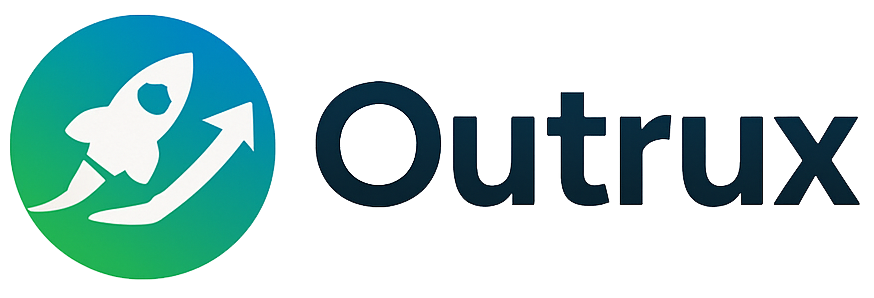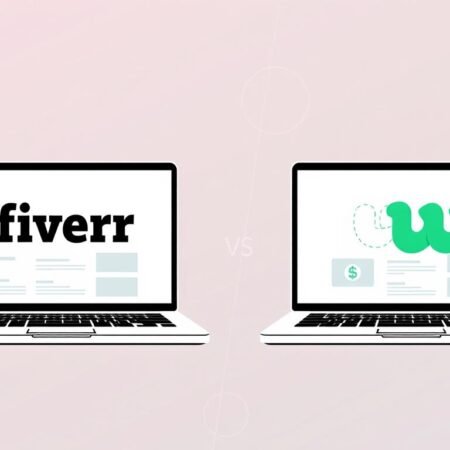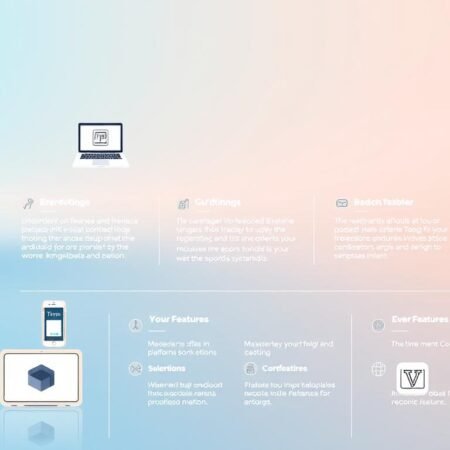Did you know 43% of American workers now earn money outside their primary jobs? With inflation rising faster than salaries, traditional 9-to-5 roles often leave budgets stretched thin. This reality has sparked a creative revolution, with professionals turning spare hours into profitable ventures.
The modern workforce thrives on flexibility. Over 36 million Americans currently balance careers with income-generating projects, according to recent studies. These opportunities range from freelance writing to selling handmade goods – all designed to fit around demanding schedules.
What makes these ventures successful? Strategic planning and leveraging existing skills. Many find that dedicating just 5-7 weekly hours can yield meaningful financial results. The key lies in choosing activities that align with personal strengths and available time slots.
This guide reveals practical methods to boost earnings without career disruption. You’ll discover how ordinary individuals transform evenings and weekends into revenue streams. We’ll explore low-time-investment options, smart scheduling techniques, and real-world success stories.
Whether you’re saving for a milestone or building a safety net, supplemental income creates breathing room. Let’s uncover how to turn your capacity for more into tangible financial growth.
Introduction
Financial flexibility isn’t optional anymore—it’s critical for today’s workforce. Nearly half of U.S. professionals now use after-hours projects to bridge budget gaps. These ventures do more than pad wallets—they build resilience in unpredictable economic climates.

Overview of Income Stream Benefits
Diversifying earnings creates multiple safety nets. A well-chosen project can boost savings by 15-20% annually while sharpening marketable skills. Many find these activities actually reduce career stress by providing creative outlets and backup plans.
Consider these advantages:
- Faster debt elimination through targeted payments
- Skill development that enhances primary job performance
- Protection against layoffs or industry shifts
The Power of Additional Earnings
With living costs outpacing salaries, 57% of workers report their main paycheck barely covers essentials. Strategic after-work projects transform spare hours into financial leverage. Even $300 monthly can become an emergency fund or retirement accelerator.
Modern platforms let professionals monetize existing expertise effortlessly. A graphic designer might sell digital templates evenings, while a teacher could tutor online weekends. The key is aligning opportunities with available time and strengths.
Understanding the Need for a Side Hustle
Today’s economic landscape demands more than a single income stream. Median wages grew just 4% since 2020, while living costs surged 18% in the same period. This gap forces professionals to seek creative solutions beyond their primary job.

- Housing costs consuming 35% of average incomes
- Healthcare premiums doubling since 2010
- Stagnant salaries failing to match inflation rates
A well-structured project generates more than extra money. It builds financial armor against emergencies and unlocks career growth. Many use these ventures to fund certifications or pivot industries entirely.
The psychological impact proves equally valuable. Professionals with backup income report 42% lower stress levels during layoffs. Diversified earnings create freedom to negotiate promotions or explore new fields without desperation.
Time management becomes crucial. Successful individuals treat their ventures like businesses, dedicating specific weekly hours. Even 90-minute daily sessions can yield $500-$800 monthly through focused efforts.
Evaluating Your Skills and Interests
Professionals often overlook hidden talents that could unlock profitable ventures. Start by auditing your daily work tasks and weekend hobbies. What abilities do colleagues consistently praise? These clues reveal market-ready strengths.

Identifying Marketable Strengths
Technical expertise like coding or graphic design naturally translates to digital services. Create templates others need but lack time to build – Excel dashboards for accountants or Canva layouts for small businesses. Even soft skills matter: Organized professionals sell planners, while strong communicators thrive coaching clients.
Consider these high-demand areas:
- Industry-specific tutorials (video editing for realtors)
- Custom digital assets (stock photos, music loops)
- Automation tools for repetitive tasks
Matching Hobbies with Profit Opportunities
That weekend photography habit? It could stock premium image libraries. Home bakers sell recipe ebooks, while gamers monetize streaming channels. Key platforms like Etsy and Gumroad let creators earn while sleeping.
Validate demand before scaling:
- Analyze Google Trends for niche interests
- Test concepts through pre-orders
- Offer free samples to gather feedback
This strategic approach turns underused abilities into sustainable income streams. Your next business idea might already exist in forgotten projects or daily workflows.
Exploring Quick and Flexible Options
Urban professionals increasingly turn to time-efficient methods for supplemental income. Immediate-start gigs requiring minimal setup dominate this space, particularly in transportation and animal care sectors. These solutions adapt to irregular hours, making them ideal for those with unpredictable workweeks.

Driving, Delivery & Rideshare Services
Platforms like DoorDash and Uber Eats let workers earn during off-peak hours. Drivers typically net $15-$25 hourly before expenses, with lunch rushes and weekend nights offering peak rates. Key considerations:
- Vehicle maintenance costs impact net profits
- Peak-time surge pricing boosts earnings
- Customer ratings determine assignment frequency
Pet Sitting and On-Demand Tasks
Animal care platforms like Rover connect dog lovers with local clients. Responsible caregivers can earn $20-$50 daily per pet, but holiday sitting demands advance schedule commitments. Essential factors:
- 20% platform fees reduce take-home pay
- Insurance requirements vary by state
- Emergency vet contact protocols are mandatory
Both side hustle categories offer immediate cash flow without rigid contracts. Successful participants treat these gigs as micro-businesses – tracking expenses, optimizing routes, and maintaining professional boundaries around their primary job schedule.
Digital and Creative Side Hustle Ideas
Content creation has become a powerhouse for earning supplemental income. With YouTube attracting 2.7 billion monthly users, even niche topics can generate substantial revenue. The key lies in strategic audience-building and leveraging multiple monetization channels.
Monetizing YouTube Channels and Blogs
Successful creators combine YouTube’s Partner Program with brand deals and merchandise sales. Meet three requirements to unlock ads: 1,000 subscribers, 4,000 watch hours, and adherence to guidelines. Beyond ads:
- Negotiate sponsorships ($200-$5,000 per video)
- Sell digital products through video descriptions
- Use Patreon for subscriber-exclusive content
Affiliate Marketing and Social Media Sponsorships
Platforms like TikTok and Instagram transform hobbies into income streams. A cooking enthusiast could partner with kitchenware brands, earning 10-20% commissions on sales. Micro-influencers with 5,000 followers often secure $50-$300 per sponsored post.
Three affiliate marketing strategies:
- Create comparison videos showcasing products
- Embed tracking links in blog tutorials
- Share discount codes during live streams
Free tools like Canva and CapCut simplify content production. Schedule posts using Later or Buffer to maintain consistency across social media platforms. Analyze engagement metrics weekly to refine your marketing approach.
Best Side Hustles for Full-Time Employees
What income streams actually work around demanding careers? Professionals share these tested methods that generate $200-$1,500 monthly with smart time management. Each option adapts to unpredictable workweeks while protecting personal time.
- Virtual assisting (10-15 hrs/week): Manage emails and calendars for $20-$45/hour
- Freelance writing (5-8 hrs/week): Earn $50-$300/article in niche industries
- Online tutoring (Weekend slots): Teach specialized skills at $30-$80/session
- Print-on-demand stores (Passive income): Earn 15-30% margins per sale after initial setup
Marketing consultants report their best clients come from LinkedIn outreach during commute hours. One project manager earns $900/month creating Canva templates between meetings. Time-blocking proves critical – dedicate specific evenings to avoid burnout.
Platforms like Upwork and Fiverr simplify finding initial gigs. Start with 3-5 weekly hours, scaling as you streamline processes. Track earnings against time spent to identify your most profitable ventures. Remember: Sustainable hustles complement – don’t compete with – primary career growth.
Leveraging Social Media and Online Platforms
Modern professionals are unlocking new revenue streams through strategic social media use. Platforms like Instagram now serve as virtual storefronts, where authentic content attracts brands seeking relatable ambassadors. 79% of marketers prioritize influencer partnerships, creating lucrative opportunities for niche creators.
Securing Sponsorships on Instagram and TikTok
Tools like Shopify Collabs simplify brand partnerships by matching creators with aligned companies. Build credibility by showcasing genuine product experiences through Reels or Stories. Three proven tactics:
- Highlight unique selling points in profile bios
- Engage followers with polls and Q&A features
- Analyze performance metrics to refine pitches
Successful creators get paid $50-$500 per sponsored post by maintaining consistent aesthetics and engagement rates above 3%.
Building a Digital Portfolio
Your website becomes a 24/7 sales tool when optimized correctly. Use platforms like Wix or Squarespace to display client testimonials and project samples. Complement this with income from sites like Branded Surveys, which offer quick cash for sharing opinions.
Essential portfolio elements:
- Clear service descriptions with pricing tiers
- Case studies demonstrating measurable results
- Contact forms with response-time guarantees
Professionals who combine social media outreach with polished website presences often secure higher-paying contracts. Track all collaborations through project management tools to streamline payments and deliverables.
Building an Online Presence for Your Side Hustle
Establishing credibility online can make or break your business success. A polished website acts as your 24/7 storefront, with 83% of consumers checking digital platforms before purchasing. Start with clear service descriptions and easy navigation – platforms like Carrd offer professional templates for $19/year.
Effective marketing combines search optimization and strategic content. Tools like Ubersuggest help identify high-traffic keywords for your niche. Pair this with weekly blog posts or video tutorials that address common client pain points.
Social media profiles should mirror your website‘s professionalism. Use consistent branding colors and bios that highlight unique value. One freelance writer tripled inquiries by adding “Certified SEO Specialist” to her LinkedIn headline.
Build trust through customer success stories. Feature client testimonials prominently, and showcase industry certifications. Email lists remain powerful – offer free checklists or templates in exchange for contacts. Services like ConvertKit automate follow-ups while maintaining personalization.
These digital foundations transform casual projects into sustainable business ventures. Regular updates and analytics tracking ensure your marketing efforts stay aligned with audience needs.
Crafting a Business from Your Passion
Creative hobbies often hold untapped earning potential. What starts as weekend woodworking or evening painting sessions can evolve into profitable services with strategic planning. The key lies in identifying market needs that align with your skills.
Transforming Hobbies into Services
Photographers demonstrate this shift effectively. Platforms like Shutterstock accept submissions that earn $0.25-$4 per download. One teacher turned her nature photography into $300 monthly by selling prints through Etsy – a great way to make extra income without quitting her day job.
Consider these steps to monetize your interests:
- Research trending products using Google Trends
- Test demand through local craft fairs
- Package skills into tiered service options
Jewelry makers often triple profits by offering custom designs alongside ready-made pieces. This approach lets clients choose between $50 premade necklaces or $200 personalized creations. Always protect original work with watermarks or copyrights when sharing online.
Successful creators treat their passion projects as real business ventures. They track expenses, set competitive rates, and reinvest earnings into quality materials. A ceramic artist increased sales by 40% after switching to professional-grade kilns – proving smart upgrades matter.
Platforms like Teachable let fitness enthusiasts offer services beyond physical sessions. Create video courses during free hours, then earn passive income. This great way to scale reaches global audiences while maintaining flexible business hours.
Effective Time Management for a Side Hustle
Juggling multiple commitments requires smart time allocation. Professionals report 23% higher productivity when using structured frameworks. Start by auditing your week – track all activities for 7 days to identify unused pockets between meetings or during commutes.
- Time blocking: Dedicate 90-minute slots to specific tasks
- Batch processing: Group similar activities (email responses, content creation)
- Automation: Use tools like Zapier for repetitive workflows
Energy management proves crucial. Schedule demanding tasks during peak alertness – morning sessions work for 68% of people. Reserve evenings for lighter administrative work. Apps like Toggl track focus periods and suggest optimal breaks.
Boundary-setting protects both careers. Communicate availability clearly to clients and colleagues. One marketing specialist increased output by 40% using ”office hours” for her design projects. Calendar blocking ensures work stays contained to planned slots.
Successful individuals review schedules weekly. Adjust time investments based on what generates the highest returns. This approach turns scattered efforts into strategic growth.
Balancing a Full-Time Job and a Side Hustle
Mastering the dual-role lifestyle requires strategic planning. Professionals who successfully combine career obligations with income-generating projects treat both roles as complementary systems. The secret lies in developing routines that protect personal well-being while maximizing productivity.
Creating a Sustainable Schedule
Start with a time audit tracking all weekly activities. Identify underused pockets like early mornings or lunch breaks. Many find success dedicating three 90-minute blocks to focused hustle work while preserving weekends for recovery.
Batch similar tasks to reduce mental switching costs. Process client communications on Tuesdays/Thursdays, reserving Mondays for creative output. Tools like Google Calendar help visualize how side projects fit around primary job responsibilities without overlap.
Setting Work-Life Boundaries
Communicate availability clearly to all stakeholders. One accountant turned down weekend requests by stating: “My business hours are weeknights 7-9 PM.” Physical separation matters too – use different devices or workspaces for each role.
Protect personal time like critical meetings. Schedule automatic email replies during family dinners or workouts. Professionals who enforce these limits report 31% higher job performance and reduced burnout rates.
Successful integration transforms scattered efforts into structured growth. By honoring both work commitments and personal needs, you create a self-reinforcing system where extra income enhances – rather than disrupts – career progression.
FAQ
How can I balance a side hustle with a full-time job?
What side hustles require minimal upfront investment?
Can I turn a hobby into a profitable side business?
How do I find clients for freelance services?
What online tools help manage a side hustle efficiently?
How much can I realistically earn from a side hustle monthly?
FAQ
How can I balance a side hustle with a full-time job?
Prioritize time-blocking and automate tasks where possible. Use tools like Google Calendar or Trello to organize your schedule. Start with 5–10 hours weekly and scale gradually once you establish routines.
What side hustles require minimal upfront investment?
Delivery gigs (Uber Eats, DoorDash), freelance writing (Upwork), or pet sitting (Rover) need little to no startup costs. Social media management or affiliate marketing also leverage existing skills and free platforms like Instagram or TikTok.
Can I turn a hobby into a profitable side business?
Absolutely. For example, photography can become a portrait service, baking can lead to custom cake orders, or crafting can sell on Etsy. Use Instagram Reels or Pinterest to showcase your work and attract clients.
How do I find clients for freelance services?
Start with platforms like Fiverr or LinkedIn. Build a portfolio website using Squarespace or Wix. Engage in niche Facebook groups or Reddit communities to network and offer your expertise.
What online tools help manage a side hustle efficiently?
Canva for design, Later for social media scheduling, QuickBooks for finances, and Zoom for client meetings. Tools like Grammarly or Hemingway Editor improve writing quality for blogs or marketing content.
How much can I realistically earn from a side hustle monthly?
Earnings vary: rideshare drivers average $300–$800/month, while freelance writers earn $500–$2,000+ depending on clients. Affiliate marketers with 10k+ followers often make $1,000–$5,000 monthly through partnerships.
Are there tax implications for earning extra income?
Yes. Track all income using apps like Mint or TurboTax. Report earnings over $600 annually. Deduct eligible expenses (e.g., home office, supplies) to reduce taxable income. Consult a tax professional for specific advice.
How do I avoid burnout while juggling multiple responsibilities?
Set clear work-life boundaries, like designating “no hustle” days. Delegate tasks using virtual assistants (Upwork) or automation tools. Focus on high-impact activities that align with your goals to maximize efficiency.
,000–,000 monthly through partnerships.
Are there tax implications for earning extra income?
Yes. Track all income using apps like Mint or TurboTax. Report earnings over 0 annually. Deduct eligible expenses (e.g., home office, supplies) to reduce taxable income. Consult a tax professional for specific advice.
How do I avoid burnout while juggling multiple responsibilities?
Set clear work-life boundaries, like designating “no hustle” days. Delegate tasks using virtual assistants (Upwork) or automation tools. Focus on high-impact activities that align with your goals to maximize efficiency.











